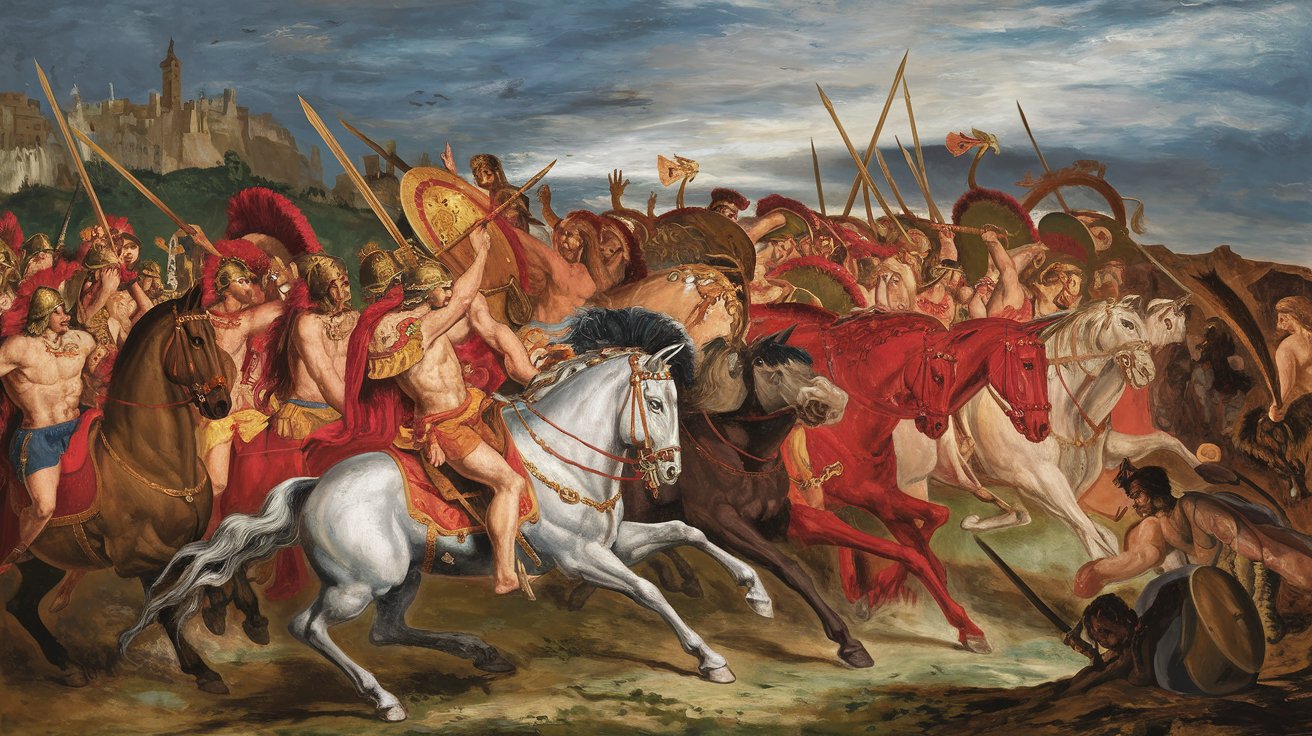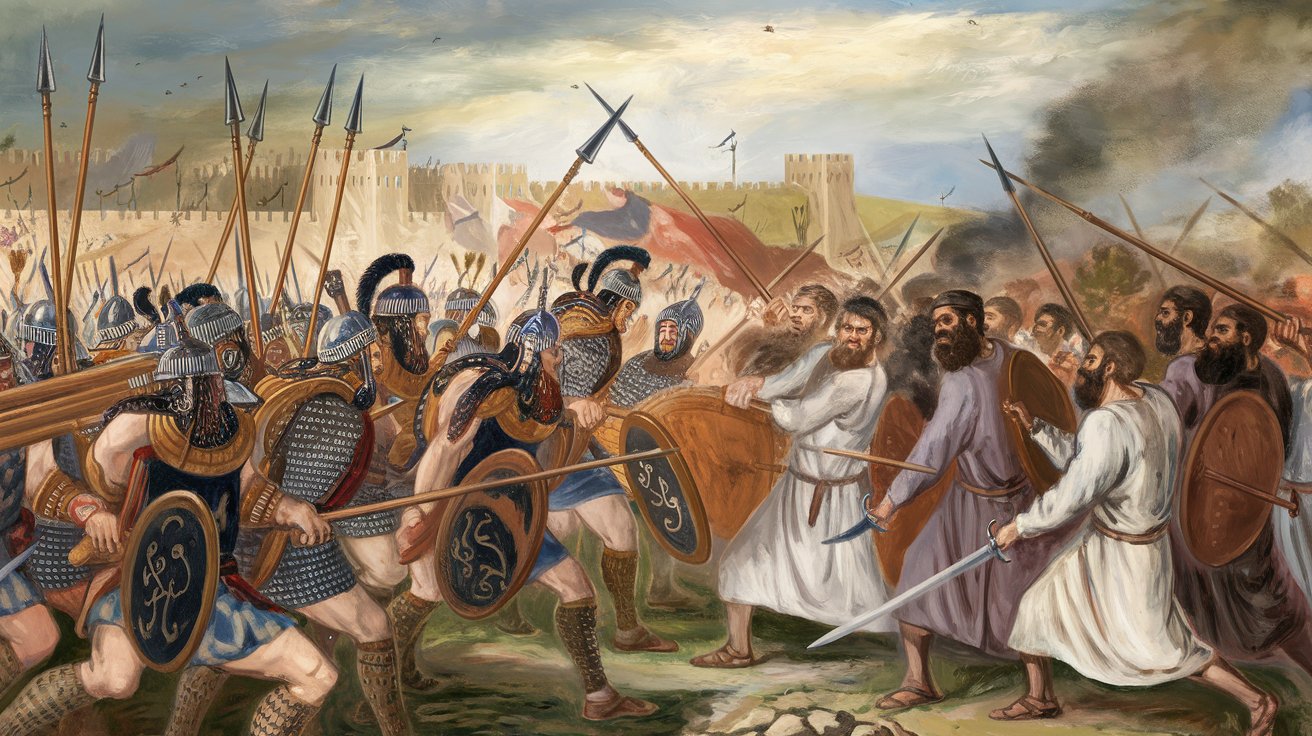
How did Colchis conquer Diauehi? The ancient region of Colchis, nestled on the Black Sea coast in what is now western Georgia, played a pivotal role in the history of the Caucasus. Known for its rich natural resources and advanced metallurgy, Colchis was a formidable power. Diauehi, a tribal union in northeastern Anatolia, faced numerous invasions and eventually fell to Colchis around the 760s BC. This conquest marked the end of Diauehi's independence and the beginning of Colchian rule. The story of Colchis and Diauehi intertwines with Greek mythology, Roman conquests, and the rise of early Georgian states, painting a vivid picture of ancient civilizations and their enduring legacies.
Key Takeaways:
- Colchis, an ancient region in Georgia, conquered Diauehi, a tribal union, in the 8th century BC, marking a significant shift in the region's political landscape.
- The Colchians were known for their advanced metallurgy and military prowess, and their conquest of Diauehi had a lasting impact on the region's history and culture.
Geographical Setting and Early History
Colchis, an ancient region in western Georgia, was known for its strategic location on the Black Sea coast and its rich natural resources. This area played a significant role in the history of the Caucasus.
-
Colchis, also known as Egrisi in Georgian, was situated on the Black Sea coast. This location made it a hub for trade and cultural exchange.
-
The Colchian culture thrived during the Bronze Age. This culture was closely related to the neighboring Koban culture, indicating a network of interconnected ancient civilizations.
Diauehi: A Tribal Union
Diauehi, a tribal union in northeastern Anatolia, had a complex history marked by invasions and interactions with neighboring powers.
-
Diauehi was a tribal union recorded in Assyrian and Urartian sources during the Iron Age. It was an important formation of possible proto-Georgians.
-
Between 2100 and 750 BC, Diauehi faced numerous invasions. These invasions came from tribes like the Hittites, Urartians, Medes, Proto-Persians, and Cimmerians.
Urartian Expansion and Conquest
The rise of Urartu in the early 8th century BC brought significant changes to Diauehi, leading to its eventual subjugation.
-
Menua, the king of Urartu, conquered part of Diauehi in the early 8th century BC. He annexed important cities like Zua, Utu, and Shashilu.
-
Argishti I, Menua’s son, continued the campaigns against Diauehi. In 783 BC, he defeated King Utupursini, forcing him to pay tribute.
Colchian Tribes and Their Influence
By the 13th century BC, the Colchian tribes had consolidated their power, setting the stage for future conquests.
-
The Colchian tribes consolidated their power by the 13th century BC. This consolidation laid the groundwork for their interactions with Diauehi.
-
Colchian culture was known for its advanced metallurgy and goldsmith techniques. These skills were highly valued in the ancient world.
Conquest of Diauehi by Colchis
The final conquest of Diauehi by Colchis marked a significant shift in the region’s political landscape.
-
Diauehi was destroyed by Colchian incursions around the 760s BC. This marked the end of Diauehi as an independent entity.
-
The Colchians were known for their military prowess and strategic alliances. These factors allowed them to expand their territories.
Greek Mythology and Colchis
Greek mythology played a significant role in shaping the narrative around Colchis, particularly through the story of the Golden Fleece.
-
From the fifth century BC onwards, Colchis was identified as Aea in Greek mythology. This mythical land was associated with the Golden Fleece.
-
Colchis was home to several mythological characters. These included King Aeëtes, Medea, Chalciope, and Absyrtus.
Cultural Influences and Roman Conquest
The cultural influences on Colchis were diverse, and the Roman conquest brought further changes to the region.
-
The cultural influences on Colchis were diverse and far-reaching. The region was known for its advanced metallurgy and goldsmith techniques.
-
In 66 BC, the Roman Empire completed its conquest of the Caucasus region. Colchis became part of the Empire as one of its provinces.
Diauehi’s Ethno-Linguistic Identification
Scholars have debated the ethno-linguistic identity of Diauehi, with some suggesting a connection to the Proto-Kartvelian language group.
-
Diauehi is considered by some scholars as a locus of Proto-Kartvelian. This suggests an important tribal formation of possible proto-Georgians.
-
Some scholars have linked Diauehi to the Bronze Age Daiaeni tribe. This connection is based on phonetic similarities between the names Daiaeni and Diauehi.
Urartian-Urartian Relations
The Urartians had complex relations with Diauehi, leading to its eventual subjugation.
-
The Urartians, a major power in the region, had complex relations with Diauehi. Kings like Menua and Argishti I campaigned against Diauehi.
-
The period of Urartian dominance had significant implications for the region. This dominance shaped the political and cultural landscape.
Colchian Culture and Economy
The Colchian culture was known for its advanced metallurgy and goldsmith techniques, which played a crucial role in its economy.
-
The Colchian culture was known for its advanced metallurgy and goldsmith techniques. The region was rich in natural resources, including gold.
-
Colchians were skilled in extracting gold from mountain rivers using fleeces. This practice may have inspired the myth of the Golden Fleece.
Greek Mythological Characters
Several Greek mythological characters were associated with Colchis, highlighting the cultural influence of Greek mythology.
- Greek mythological characters associated with Colchis included Medea and King Aeëtes. These characters were integral to the mythological narrative surrounding the Golden Fleece.
Roman Influence on Colchis
The Roman conquest of Colchis marked a significant shift in the region’s political landscape.
- The Roman conquest of Colchis in 66 BC marked a significant shift. Colchis became part of the Roman Empire, incorporating it into a larger imperial structure.
Early Georgian States and Christianity
The rise of early Georgian states and the conversion to Christianity had a profound impact on the region’s history.
-
The classical period saw the rise of early Georgian states. Colchis and Iberia were the principal kingdoms, unified under a single king and an aristocratic hierarchy.
-
In the 4th century AD, Saint Nino began preaching Christianity in Georgia. Her efforts led to the conversion of King Mirian, who declared Christianity as the state religion in 337 AD.
Legacy of Colchis
The legacy of Colchis extends beyond its historical conquests, leaving a lasting impact on the region’s cultural and economic landscape.
- The legacy of Colchis includes its advanced metallurgy and goldsmith techniques. The mythological narratives surrounding Colchis, including the story of the Golden Fleece, continue to captivate audiences.
The Legacy of Colchis and Diauehi
Colchis's conquest of Diauehi marked a pivotal moment in the history of the Caucasus. This event ended Diauehi's independence and ushered in Colchian rule, showcasing their military prowess and strategic acumen. The rich cultural tapestry of Colchis, with its advanced metallurgy and goldsmith techniques, left a lasting impact on the region. Greek mythology, particularly the tale of the Golden Fleece, further enriched Colchis's legacy. The Roman conquest in 66 BC integrated Colchis into a larger imperial framework, blending local traditions with Roman culture. Early Georgian states, like Colchis and Iberia, laid the groundwork for future political and cultural developments. The conversion to Christianity in the 4th century AD tied the region to the Eastern Roman Empire, influencing its arts and literature. Colchis's legacy endures, highlighting the region's historical significance and cultural richness.
Frequently Asked Questions
Was this page helpful?
Our commitment to delivering trustworthy and engaging content is at the heart of what we do. Each fact on our site is contributed by real users like you, bringing a wealth of diverse insights and information. To ensure the highest standards of accuracy and reliability, our dedicated editors meticulously review each submission. This process guarantees that the facts we share are not only fascinating but also credible. Trust in our commitment to quality and authenticity as you explore and learn with us.


